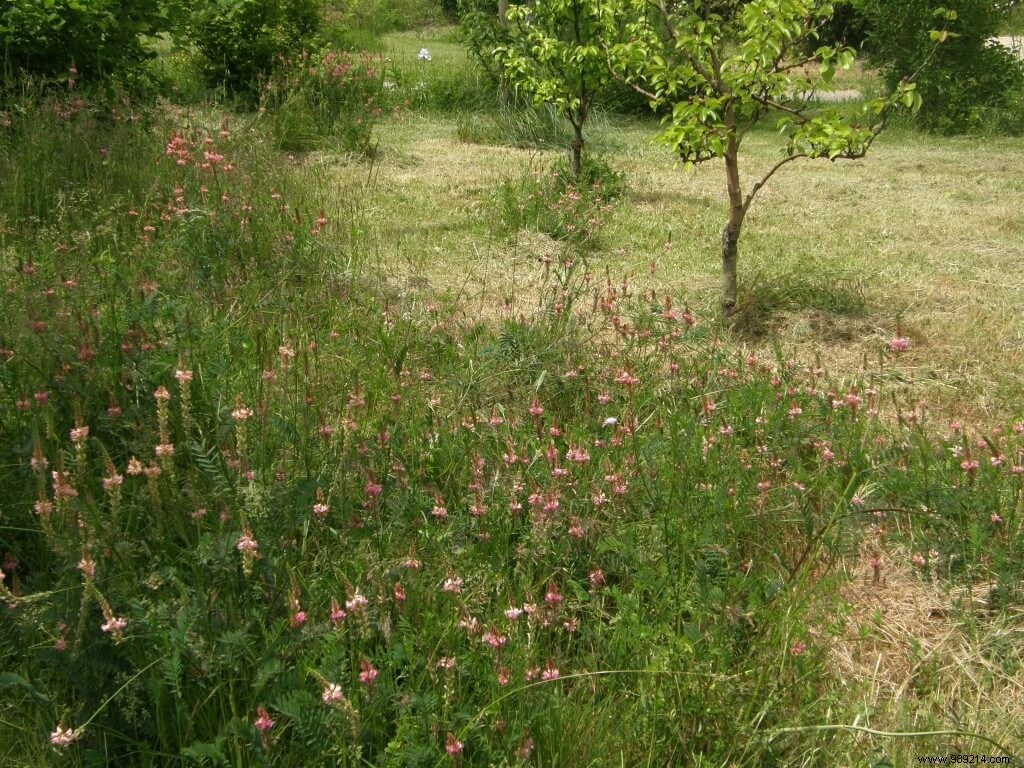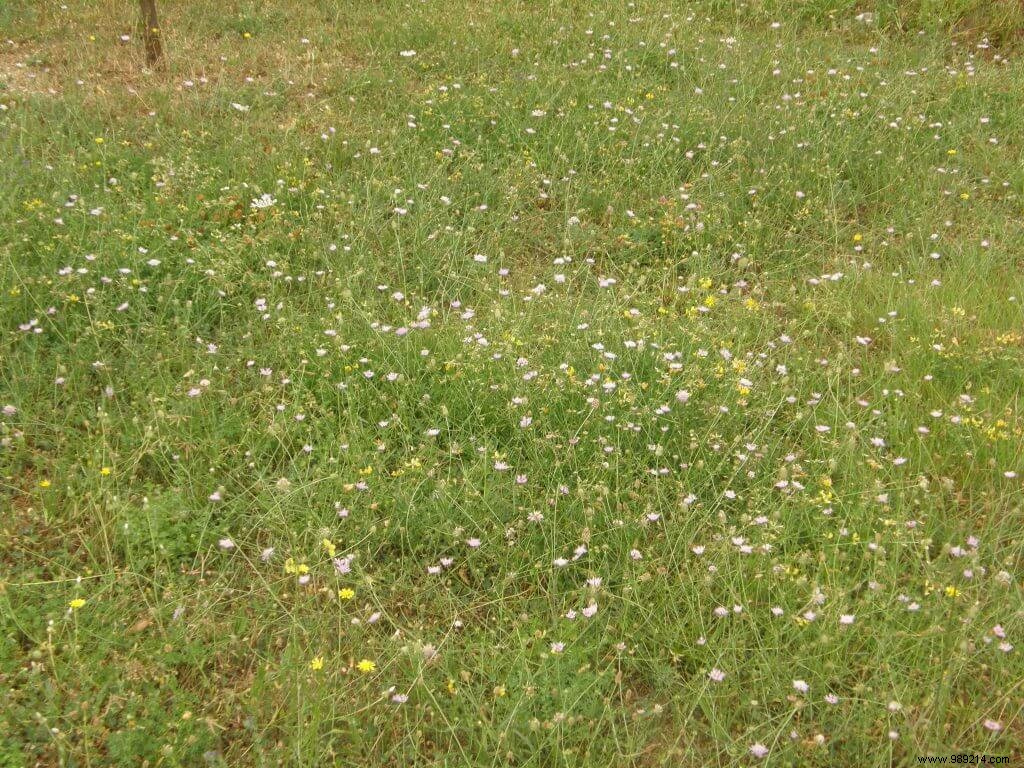A garden is a set of different scenes forming a atmosphere . In the treatment of garden spaces, all the exterior parts are not maintained in the same way. If it is easy to understand that a vegetable garden does not receive the same treatment as a swimming pool edge or an embankment, it is less customary to mow more or less high, or even not to mow at all some grassy areas. This is called differentiated management.
The places of passage will be kept fairly level, while the grassy soils more rarely visited will withstand mowing twice a year.
The images below show fruit trees with sainfoin , borage or trefoil. These wild grasses would probably never have been able to provide the expected services if the mower had reduced the volume of the outer parts. These plants are melliferous, attract a large number of insects, have deep roots and two of them (look for them!) are from the legume family and carry nitrogen-fixing bacteria on their roots. , which has the effect of bringing this element to neighboring cultures. All three shade the base of the trees and shelter a phenomenal quantity of soil-dwelling insects feeding on insect eggs and larvae.
Differentiated management contributes to increasing biodiversity and regulation of different animal species. With general mowing, what would have become of the buttercups, poppies, vetches, chamomile, daisies, scabious, burnets, orchids, forget-me-nots, trefoil and other wild flowers, so beautiful and so useful for the balance of the soil, the garden? and the gardener…

Sainfoin is melliferous and brings nitrogen to the soil

Flowering fallow, and differentiated management. Only the passages are mown.